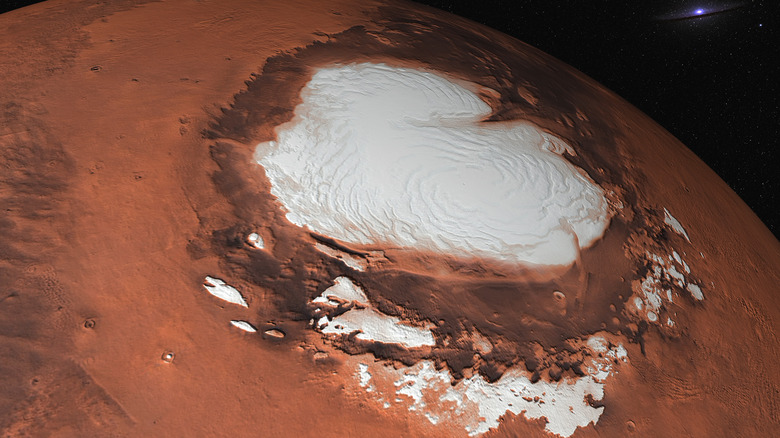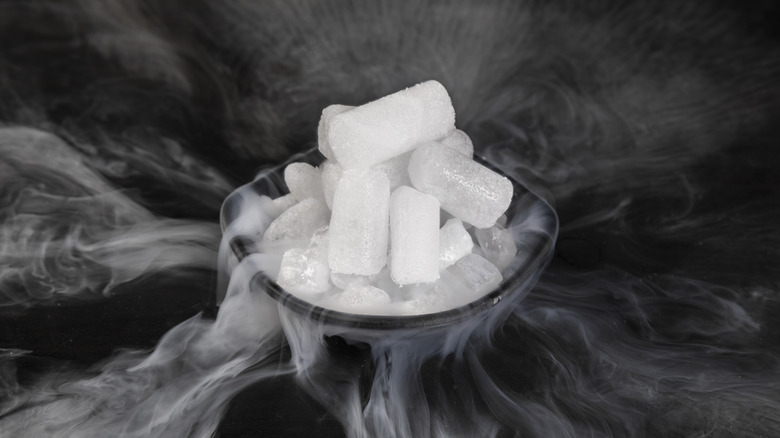It Snows On Mars, But It's Not The Same As Earth
The weather on Mars is always extreme. The red planet's atmosphere is more than 100 times thinner than Earth's, and contains just 0.13% oxygen, compared to Earth's 21%. Although an unassuming rock proved that there was once water on Mars, the planet's surface is now a barren desert. Given its thin atmosphere and lack of water and oxygen, you would assume that Mars lacks the conditions necessary for snow, but that's only because we are trapped in the Earth way of thinking. It actually does snow on Mars. It's just a different kind of snow than what we get on Earth.
On our planet, snow is made of frozen water crystals, but this isn't the case on Mars. Despite its low oxygen levels, some water crystals do form in the Martian atmosphere. However, they never make it to the planet's surface because the incredibly low atmospheric pressure causes the crystals to sublimate, turning directly from a solid state into water vapor. And yet, NASA has still captured images of snow-capped dunes on Mars. How could that be?
It turns out that Mars experiences a second type of snow, which isn't made from water crystals. Instead, Martian snow is made of frozen carbon dioxide. This is the same thing as dry ice. If you have any experience with dry ice, you know it evaporates very quickly. In fact, it sublimates at -78.5 degrees Celsius, or -109.3 degrees Fahrenheit. That's near the coldest temperature ever recorded on Earth, but it's peanuts by Martian standards.
What winter on Mars is like
Mars's axis is tilted almost two degrees more than Earth's, causing it to experience more extreme seasonal differences than us. Winters are also twice as long there due to Mars's greater orbit around the sun. Furthermore, the red planet's thin atmosphere allows what heat it does get to escape. During a Martian winter, the temperature can drop as low as -153 degrees Celsius, which is roughly -243 degrees Fahrenheit. Compare that to the coldest temperature ever recorded on Earth, which is -89.4 degrees Celsius, or about -129 Fahrenheit (naturally, recorded in Antarctica).
Since the winter temperatures on Mars drop so much lower than they do on Earth, the planet is more than cold enough to prevent dry ice from sublimating. This allows carbon dioxide snow to coat portions of the Martian landscape. Although researchers have not been able to observe Martian snow closely, it's assumed that the snowflakes themselves would look vastly different than ours. CO2 molecules arrange together differently than water molecules, which would make the snowflakes cube shaped, and almost microscopically small.
Having temperatures cold enough to hold solid dry ice has another major impact on the Martian climate. Mars is one of the planets with polar ice caps; however, its caps are seasonal. In winter, it gets so cold that nearly a third of the CO2 in Mars' atmosphere freezes and coats the polar cap with a 2-foot layer of dry ice.

